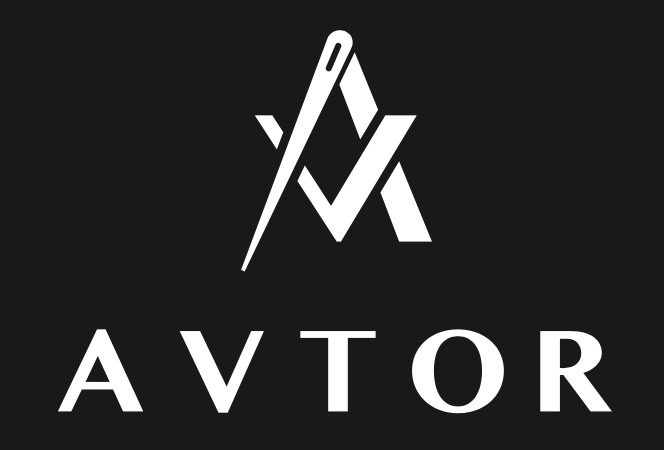Kunlun Red Star history
The idea of creating China’s first professional hockey club and competing in the KHL was born in 2015. Within just 12 months, the team already came to life.
2016
March 17 can be regarded as the ‘birthday’ of Kunlun Red Star. It was on this day that the KHL signed a protocol of intent with the hockey federations of Russia and China. This historic document was signed by Gennady Timchenko, Chairman of the KHL’s board of directors, and Vladislav Tretiak, President of the Russian Hockey Federation. IIHF President Rene Fasel was among those who took notice: he spoke of his hopes that the new club would help China’s national program prepare to take part in the 2022 Olympics in Beijing and bring a competitive roster to the tournament.
April 30 saw the club’s directors present the KHL with all the necessary guarantees about taking part in the championship.
June 24 Kunlun Red Star was added to the list of competing teams for the 2016/17 KHL season. The next day, as part of Russian President Vladimir Putin’s official visit to China, the club officially signed up to the league. In the presence of the leaders of both countries, Gennady Timchenko and Kunlun Red Star Chairman Ngok Yan Yu signed the agreement.
July 24 Kunlun Red Star played the first game in its history. Head coach Vladimir Yurzinov took the team to a pre-season camp in Finland, where the Dragons faced Traktor Chelyabinsk in an exhibition game. The Russian team skated to a 2-0 victory.
On Aug. 5 Kunlun Red Star celebrated its first ever victory, defeating Barys 3-1 in a warm-up game ahead of the President of Kazakhstan Cup in Astana (now Nur-Sultan).
2016/2017. FIRST SEASON
Sep. 1, 2016 Kunlun Red Star played its first competitive game and started life in the KHL with a 2-1 win over Amur in Khabarovsk. The first goal in our club’s history was scored by Canadian forward Sean Collins, who found Juha Metsola’s net in the 14th minute of the game. Our first ever game winner was Finnish defenseman Tuukka Mantyla, who settled the outcome with a powerful shot 56 seconds before the hooter.
Four days later, on September 5, the KHL made its debut in China. A crowd of 7,832 fans came to the LeSport Center in Beijing, built for the 2008 Summer Olympics, where Red Star took on Admiral Vladivostok. The game lived up to expectations, with a high-scoring encounter finishing 6-3 in our favor.
After playing its first games in the Chinese capital, the team then moved on to Shanghai where our new home for several months was the Feiyang Skating Center. We returned to Beijing after the New Year, wrapping up our regular season campaign and competing in our inaugural playoff campaign.
Despite that promising start to the campaign, the season was not easy for our club. That was hardly surprising. The team was thrown together at short notice and recruitment continued long after the start of the championship. Without enjoying a full pre-season together, the players were almost exhausted in the final weeks of the regular season. Nonetheless, with sheer determination and a slice of good fortune, the Dragons held on to eighth place in the Eastern Conference and reached the playoffs at the first attempt.
Our first post-season opponent was Metallurg Magnitogorsk, leader of the Eastern Conference. It was clear to all that this was something of a mismatch, but Red Star’s players did everything to make it a contest. And the guys even managed to take a game off one of the grandees of Russian hockey. On Feb. 28, in front of 7,100 spectators, the Dragons got a 3-1 win thanks to goals from Martin Bakos, Chad Rau and Tommi Taimi. It was another historic day for Chinese hockey.
That season’s team was the most multinational not just in the KHL but, probably, in the entire pro hockey world. Our ranks included players from Canada, the USA, Russia, Sweden, Finland, Slovakia, Ukraine, France and, most importantly, China. Four players from our home country represented the team in our debut season: Rudi Ying, Xia Tianxiang, Wang Guanhua and Zach Yuen. The first three were not fully ready to play at this level and only made intermittent contributions on the ice, but Yuen, who learned his hockey in Vancouver, was a regular. He featured in all 65 games that season, playing on offense or defense as required.
On Oct. 1, Zach wrote his own entry in the history books when he began the first Chinese player to get a point in the KHL. The Dragons beat Spartak 1-0 in Moscow that evening and Yuen got the assist on Max Warn’s winning goal. Then, on Oct. 27 in Shanghai, in another 1-0 game, Zach became the first Chinese player to score a KHL goal as Amur was defeated in the Feiyang Arena.
It’s tempting to use the word ‘historic’ to describe everything that happened in that debut season. And it really was the case. Every day we inscribed a new page in the history of pro hockey in China.
The season in stats
Regular championship (60 games)
Wins/losses in regulation – 24/29
Wins/losses in overtime – 2/0
Wins/losses in shoot-outs – 2/3
Points (three for a win in regulation) – 83
Position in Conference/Championship – 8/16
Goal difference – 139-144
Top scorers: Chad Rau – 40 (20+20), Sean Collins – 39 (13+26), Linus Videll – 28 (9+19)
Gagarin Cup
Round 1. Metallurg Magnitogorsk – 1-4 (2-4, 3-5, 2-3, 3-1, 2-8)
2017/2018. SECOND SEASON
Our second season was dominated by the rapid development of the club’s hockey infrastructure. Establishing a team in the KHL gave enormous impetus to the development of the game in China and by the fall of 2017, Kunlun Red Star was already represented at all levels of the Eurasian hockey pyramid: in the VHL we saw KRS Heilongjiang and KRS Junior featured in the JHL.
In addition, two women’s teams were formed to play in the Canadian Women’s Hockey League (CWHL). Both were based in Shenzhen and had similar names – Vanke Rays and KRS Vanke Rays. Only one of these, as indicated by its initials, was connected with our club. The KRS Vanke Rays were the more successful of the two, qualifying for the playoffs for the Clarkson Cup. In the semi-final, the Lady Dragons defeated Calgary Infernos 2-1 in a best-of-three series and took Markham Thunder to overtime in the gold-medal game before losing 1-2. After that debut season, the Chinese teams merged under the aegis of our club and KRS Vanke Rays continued to represent the People’s Republic in the next CWHL season.
In the KHL, our team was under the guidance of Mike Keenan following Vladimir Yurzinov’s unexpected resignation in the spring of 2017. Keenan is the only coach to win both the Stanley Cup and the Gagarin Cup. The club’s management entrusted the legendary Canadian with more than the senior team; they also appointed him as an experienced GM and gave him responsibility for the organization’s entire hockey infrastructure. Iron Mike’s brief included the creation of our various new teams.
Such a heavy workload could not fail to affect the performance of the Dragons in the KHL. The team started well, winning five out of seven games on the road and briefly hitting the top of the Eastern Conference. But gradually, as Keenan tackled a job on several fronts, results fell away. The team was unable to repeat its first-season success and make the playoffs again. However, from the point of view of developing Chinese hockey, which was, after all, one of the key tasks for our club, this was an important season.
One of the key features of this season was the arrival of a group of players with Chinese heritage, invited to the club with an eye on the 2022 Olympics. From the start, it was clear that it would not be possible to find enough players capable of playing to an international standard within China. Therefore, it was decided to use the process of naturalization, something already seen successfully in other emerging hockey nations such as South Korea, Croatia, Italy and Kazakhstan.
Following that path, Kunlun Red Star set up camps in North America in the summer of 2017 and invited dozens of local players with Chinese ancestry to try out for the team. The best of them were offered contracts in the KHL. This brought 13 new players to the club for the 2017/18 season. Naturally, not all of them made a successful step up but there were several who became big players on our team: Brandon Yip, Luke Lockhart, Vic Bartley and Cory Kane. Thanks to them, the Dragons gained a strong national identity despite welcoming talented players from all over the world.
The season in stats
Regular championship (56 games)
Wins/losses in regulation – 15/29
Wins/losses in overtime – 3/3
Wins/losses in shoot-outs – 1/5
Points (three for a win in regulation) – 61
Position in Conference/Championship – 12/23
Goals difference – 103-146
Top scorers: Gilbert Brule – 36 (17+19), Wojtek Wolski – 28 (7+21), Cory Kane – 20 (12+8), Brandon Yip – 18 (9+9)
2018/2019. THIRD SEASON
The third season was another important journey as our club gained more experience on and off the ice. Once again, we skated in the KHL, VHL, JHL and CWHL. This time, though, our VHL team had a new name – KRS-ORG, forged from our partnership with one of China’s biggest companies, O.R.G. Packaging. The boss of that company is a huge hockey fan and former goalie. Having seen the progress of Kunlun Red Star, he decided to join in the development of his favorite game here in China.
Our first team continued to build its international experience. In our first season, we had a Russian head coach, year two put North Americans in charge and year three saw the Dragons hire a European behind the bench. Finland Jussi Tapola took on the job, looking to parlay two Liiga triumphs with Tappara into a greater international reputation.
However, in terms of the club’s image, the appointment of Alexei Kovalev as Tapola’s assistant was just as big a deal. In the 1990s and early 2000s, Kovalev was one of Russia’s biggest talents. The fact that an Olympic Champion and Stanley Cup winner chose Red Star as the place for his first steps into coaching was a source of great pride for all connected with the club.
In terms of results, there wasn’t too much to celebrate, even though the team was clearly stronger than in the previous campaign. The KHL reorganized, two regular strugglers, Lada and Ugra, dropped to the VHL and as a result we played more games against stronger opposition. Scorelines across the league were tighter, not least because now a win in regulation secured two points, rather than three as in previous seasons. Once again, the Dragons fell short of a place in the playoffs, but at times the team played some great hockey and recorded several notable wins. Twice, we beat Ak Bars (4-3 in Kazan, 3-0 in Shanghai), we defeated CSKA 4-3 in Moscow and enjoyed a big win over Avangard on home ice (5-2). However, the team was inconsistent and during the season Tapola was replaced with the experienced American coach Curt Fraser.
There was more big news towards the end of the season. After almost two years playing out of Shanghai, the team finally returned home to Beijing. Our new arena, the Shougang Ice Center, forms part of the 2022 Olympic Village. Our final two home games of the season took place here, against Admiral and Barys, enabling us to bring an end to our time in Shanghai and finally feel that we had a home of our own in the city where our KHL team was born.
The season in stats
Regular championship (62 games)
Wins/losses in regulation – 19/31
Wins/losses in overtime – 0/6
Wins/losses in shoot-outs – 1/5
Points (two for a win in regulation) – 51
Position in Conference/Championship – 11/20
Goal difference – 142-190
Leading scorers: Brandon Yip – 36 (21+15), Ville Lajunen – 28 (10+18), Olli Palola – 25 (19+6)
2019/2020. FOURTH SEASON
At the start of the season the partnership between Kunlun Red Star and O.R.G. Packaging took on a new form, and we started to enjoy a Chinese derby in the VHL. Our team was renamed KRS-BSU, in honor of a new partner, Beijing Sports University, which provided our ice, while O.R.G. Рackaging continued with the ORG team. In addition, we transferred our juniors to our partner company.
That left three teams playing under the KRS banner, and all three of them were now competing in Russian leagues: Kunlun Red Star in the KHL, KRS-BSU in the VHL and KRS Vanke Rays, forced to leave the defunct CWHL, joined the Russian Women’s Hockey League as its first foreign contestant.
The Lady Dragons swept all before them. The COVID-19 pandemic, which disrupted everyday life all over the world, forced almost every hockey league to suspend its season in the spring of 2020. Only the women managed to complete their season, and our girls skated off with the trophy at the first attempt! The Rays went undefeated through the playoffs, defeated Tornado twice in the semi-final then sweeping defending champion Agidel in the grand final. Five playoff games, five wins – a fantastic debut in a new tournament – and all achieved on the road.
In the KHL, for the first time, the team began the season under the guidance of the head coach who completed the previous campaign. Curt Fraser, who took the job after Jussi Tapola’s departure, remained in position. True, the roster underwent some big changes once again, so the familiar problem of adapting quickly was an issue once more. A large group of new players had to get used to some unusual circumstances: a new league, a new country, a new way of life and, of course, a punishing travel schedule.
But we stuck to our task and, in particular, continued to add players with Chinese heritage to the team. Of the new faces in our fourth season, the most impressive were Spencer Foo and Tyler Wong. These young forwards established a line with Luke Lockhart, who was also rejuvenated by the new partnership. Under previous coaches, Luke was given a defensive role, blocking shots and killing penalties; now he enjoyed more freedom to attack. In his first two seasons with the club, Lockhart scored three goals; in this campaign he would get 13, the third highest on the team. And that Foo-Lockhart-Wong line was the club’s most productive, helping Spencer and Tyler onto the list of the top 10 KHL rookies for the season.
Another highlight of the season was the chance to play the opening games in Shenzhen. Our usual home in Beijing, the Shougang Arena, was unavailable due to the celebrations of the 70th anniversary of the People’s Republic of China, so we headed south in September to play in the home arena of our women’s team. In a huge arena, built for the 2011 Universiade, we attracted big crowds – comparable with our first season when we played at the LeSport Centre in Beijing. This time we had new record attendance of more than 8,000 fans to see the Dragons.
Once again, the team was inconsistent. On our best days, we were capable of beating the best: Ak Bars, Salavat Yulaev, Metallurg and Avangard all fell, and we took SKA to overtime. But this was also a team that could drop points against weaker opponents. Thus, even though we won all four of our games against Neftekhimik and beat Amur on three out of four occasions, we finished below both teams in the final standings.
Once again, the league table showed progress compared with previous seasons but, once again, it wasn’t enough to secure a playoff spot. Even so, this season we were in contention until the very end. Who knows what might have happened had it not been for the pandemic? On Jan. 23, the Dragons went on a road trip and, while still traveling, learned that we could not return to China. A month living out of suitcases, naturally, did little for the team’s form, but there is little merit in complaining about a lost opportunity. The whole world was suffering at this time, and dropping a few points in a hockey tournament was hardly the biggest problem.
The season in stats
Regular season (62 games)
Wins/losses in regulation – 20/28
Wins/losses in overtime – 3/3
Wins/losses in shoot-outs – 3/5
Points (two for a win in regulation) – 60
Position in Conference/Championship – 10/18
Goals difference – 139-158
Leading scorers: Brandon Yip – 31 (15+16), Tyler Wong – 31 (15+16), Andrew Miller – 31 (11+20)
2020/2021. FIFTH SEASON
From a statistical point of view this season was the least impressive of our first five campaigns, but this time wasn’t really about the numbers. The coronavirus pandemic impacted the whole sporting world and, for obvious reasons, our club suffered more than most. Even in midsummer, as most of our rivals were starting their pre-season preparations, we did not know if we would compete in the coming campaign. Indeed, it wasn’t entirely clear if the club could continue at all. It was impossible to remain in China, so we sought a temporary home in Russia. Ultimately, we found arenas in Moscow Region: Mytishchi for the KHL, Stupino for the Women’s League. In these circumstances, we had to mothball our VHL teams for the year.
As a result, it wasn’t until late July that our directors could announce a final decision: game on! Against the odds, we would continue in the KHL. At last, we could start building our men’s roster.
But the problems were only starting. With borders closed, there was no way to bring in imports from Europe and North America in time for the start of the season. The Russian authorities allowed exceptions for foreign employees with specialist work visas but since our club is not a Russian organization, we could not use that route and had to wait for the restrictions to ease.
Things only began to change in mid-September, when the season was already well underway. As a result, Alexei Kovalev and his coaching staff were forced to start the season with a roster comprised entirely of Russian players. They called up a host of players who had not secured contracts by the start of August and embarked on less than a month of pre-season preparation before the championship started.
As a result, we ended up with a vast number of players: in the KHL alone, the Dragons used 55 different players. Including pre-season, we had more than 70. Almost every day we had someone else going into quarantine after testing positive for COVID and it was a long time before we were able to name the same line-up for two games in a row. At times, the team was seriously short-benched.
This went on for two months until, gradually, we started welcoming our imports. However, all too often players would arrive, play a couple of games, and then find themselves in quarantine. It wasn’t until late October that we finally had a more or less settled roster and secured our first victory of the season. By this time, after six weeks of unrelenting struggle, it was already wildly optimistic to set any targets about climbing the table or reaching the playoffs. The season began as a fight for survival and stayed that way until the bitter end.
Yet the club survived! And that was our big achievement of the year. At times, we even managed to produce some decent results on the ice. Thus, in November the Dragons defeated SKA for the first time in our five-year history and managed it on the road in St. Petersburg with a 2-1 verdict. Our performances in December were genuinely impressive and in February we grabbed another historic victory, beating Jokerit 5-4 in overtime to win in Helsinki for the first time.
But, at best, this was a streaky campaign: the team missed out on a normal pre-season and needed a third of the season merely to establish a consistent roster. Therefore, it was hard to raise serious expectations of success. By the end of the campaign, our players were drained, physically and mentally, by a season of incessant struggle.
Even among these depressing results, it’s possible to find positives. Despite our problems, the Dragons did not finish bottom of the rankings by any measure: points, goals scored or allowed, power play or penalty kill, we managed to outstrip at least one opponent every time. We even managed to pick up victories in overtime and a shoot-out, which not every team managed over the course of the season.
Looking more closely at the results, it’s noticeable how often we were beaten by a single goal. Several other games saw a two-goal lead only in the final seconds when the opposition scored into an empty net. In many games, we were competitive until the bitter end, only narrowly failing to match our opponents. There were only a handful of games when the Dragons were outclassed.
Naturally, it’s hard to take pride in these relatively minor achievements. But, as we said at the start, the principal source of pride this season lies not so much in the winning as in the taking part. A club that faced a serious threat of extinction managed to survive and complete the season. Moreover, we never once had to ask the league to reschedule a game, we refused to feel sorry for ourselves and battled onwards day after day in the face of any obstacles.
That’s why, at the final hooter of a challenging season, everyone involved with the club could feel that we had come together to deliver a significant victory – and look forward to a future that can only get better.
The season in stats
Regular championship (60 games)
Wins/losses in regulation – 11/39
Wins/losses in overtime – 1/6
Wins/losses in a shoot-out – 1/2
Points (two for a win in regulation) – 34
Position in conference/championship – 12/22
Goal difference – 139-213
Top scorers: Ethan Werek – 32 (15+17), Hunter Shinkaruk – 30 (12+18), Ryan Sproul – 25 (9+16)
2021/2022. SIXTH SEASON
It was a very unfortunate season for the Kontinental Hockey League. The coronavirus pandemic continued to ruffle the nerves of many teams, and in January they decided to stop the championship long before the scheduled Olympic break, so as not to jeopardize the preparation of the national teams for the main start of the four-year period. Later, it was decided not to finish the regular season, so the teams played a different number of games, and the final placings were settled according to the percentage of points scored.
From a statistical point of view, this season could be considered unsuccessful for our club as well, even the most unsuccessful in its short history. We were far behind in last place in the entire league for the first time.
In fact, in terms of the mission that we have undertaken since the formation of the club, it was an outstanding season, and its main result is that we completed the mission! The XXIV Winter Olympic Games host country was proudly represented in the ultimate hockey tournament by both men’s and women’s teams. Women even managed to achieve two victories – over Denmark and Japan, and success in a game of fundamental importance against continental rivals cannot be called anything other than outstanding, especially since the Japanese team was significantly higher than the Chinese in the world rankings.
The men’s team lost all four games, but this was not a cause for disappointment. Everyone understood that there was no chance in competition with the teams of the USA and Canada, and even Germany, the runner-up of the previous Olympics, did not look like an equal opponent. Our guys were required to show character, which they did, giving battle to the Germans and losing with a respectable 2-3 score. And in the playoffs, the Dragons did their best against Canada and even scored a couple of goals. That is why the audience was enthusiastic about our performance in Beijing, and the country’s sports leadership realized that Chinese hockey should be developed further.
For the sake of all this, of course, the KHL championship had to be sacrificed. Before the start of the season, a large group of Chinese-born players arrived, and for a long time, they were limited to just practicing next to more experienced partners. Only in the second half of the championship, Ivan Zanatta’s coaching staff decided that they were ready to hit the ice. It is not surprising that we ended the championship with a series of 14 defeats, but for us, it was a fight not for the result that is reflected on the scoreboard. The main result was achieved: hockey players, brought up in Chinese schools, on the eve of the home Olympics, were baptized by fire at an unprecedented level, and it was precisely for this that our club was once created.
So, the assessments of the sixth season in the history of Kunlun Red Star will forever remain twofold: “unsuccessful” in terms of the team’s performance in the KHL and “outstanding” in terms of the club’s global mission.
The season in stats
Regular championship (48 of 60 games)
Wins/losses in regulation – 7/32
Wins/losses in overtime – 1/5
Wins/losses in a shoot-out – 1/2
Points (two for a win in regulation) – 25
Position in conference/championship – 12/24
Goal difference – 101-198
Top scorers: Spencer Foo – 33 (14+19), Tyler Wong – 28 (14+14), Brandon Yip – 27 (13+14)
2022/2023. SEVENTH SEASON
New season – a new challenge! A successful performance at the home Olympics inspired both the public and, most importantly, the country’s sports leadership, which demanded continuation. Perhaps, at the time of the creation of our club – back in 2016 already – someone might have thought: “They will hold their own Olympics and end there.” Such a skeptical approach, probably, could have taken place, but in reality, everything turned out to be completely different. Sports life never stops, one Olympics is followed by another, and each World Cup is followed by a new one, which means that we cannot stop either.
Moreover, the task has become more difficult, because the Chinese team will no longer receive an automatic Olympic berth, therefore, a spot in the 2026 frame must be obtained in qualification and through constant progress in the IIHF World Championship system. This is what became our main goal in the first post-Olympic season.
The course for the education of Chinese hockey talents continued: during the season, goalie Sun Zehao, defensemen Ty Schultz, Chen Zimeng, and Yan Ruinan, forwards Zhang Zesen and Guo Jianing played for the Dragons. As for recruits from other countries, we invited mainly those who had the right, having met the IIHF criteria, to obtain Chinese sports citizenship and play for China in international tournaments.
Zach Leslie made an impressive debut as he set the club record for most points scored by a defenseman in a season with 39 (8+31). Another defensive player, Kyle Wood, also performed well while forwards Jack Rodewald, Devin Brosseau, and Colin Campbell regularly gave us reasons to cheer. Who knows, maybe one day these guys will also be able to try on the uniform of the national team.
Those who have long been part of the national team, and first of all, the one and only Brandon Yip, also performed successfully. Captain China set new records. Firstly, he gave out a series of six games with goals, breaking the record of the great Jaromir Jagr. No one in the KHL has ever managed a streak like this at the age of 37 or older. Secondly, Yipper scored the fastest goal in the club’s history, opening the scoring after 27 seconds. Thirdly, at the end of the season, he scored 42 points (21 + 21), and this also became a club record (the previous milestone was set in the very first season by Chad Rau).
In general, we had more than enough reasons to talk about this season as a historical one.
Again, we failed to impress the KHL with team results, but this was not our priority. The climax of the season was to be the World Championship in Division IB, held in Tallinn at the end of April. The Dragons seriously counted on reaching the next, second-best division in world hockey, but, alas, they failed to complete this task. The first place was taken by the Japanese who prevailed over Greg Ireland’s guys 5-2. Well, that’s the sporting life: you either win or you learn. The Tallinn tournament didn’t bring gold, but it brought a useful experience, which will undoubtedly come in handy in the future. After all, as we have already said, each tournament will certainly be followed by a new one.
The season in stats
Regular championship (68)
Wins/losses in regulation – 15/40
Wins/losses in overtime – 3/3
Wins/losses in a shoot-out – 3/4
Points (two for a win in regulation) – 49
Position in conference/championship – 10/21
Goal difference – 152-226
Top scorers: Brandon Yip – 42 (21+21), Zach Leslie – 39 (8+31), Parker Foo – 30 (15+15)

















